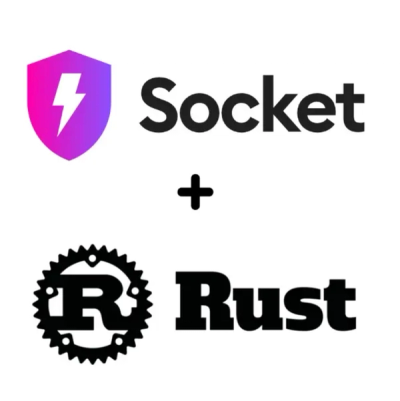
Security News
Crates.io Users Targeted by Phishing Emails
The Rust Security Response WG is warning of phishing emails from rustfoundation.dev targeting crates.io users.
remark-sectionize
Advanced tools
This is a remark plugin to wrap each
heading and the content that follows it in a <section> tag, allowing you to
style the document sections using CSS.
When using remark-sectionize, given the following markdown:
# Forest elephants
## Introduction
In this section, we discuss the lesser known forest elephants.
## Habitat
Forest elephants do not live in trees but among them.
...remark will output the following HTML:
<section>
<h1>Forest elephants</h1>
<section>
<h2>Introduction</h2>
<p>In this section, we discuss the lesser known forest elephants.</p>
</section>
<section>
<h2>Habitat</h2>
<p>Forest elephants do not live in trees but among them.</p>
</section>
</section>
One use case of this plugin is to permit the logical sections of a document to be targeted and styled using CSS. For example, you could do something like this:
section > section:nth-child(even) {
background-color: white;
}
section > section:nth-child(odd) {
background-color: papayawhip;
}
To give the h2-level sections alternating background colors.
If you are invoking remark (or unified) in JavaScript, you can add this
plugin by calling use():
import { remark } from 'remark'
import html from 'remark-html'
import sectionize from 'remark-sectionize'
const input = `
# Hello world!
The above heading and this paragraph will be wrapped in a <section> tag.
`
remark()
.use(sectionize)
.use(html, { sanitize: false })
.process(input, (err, file) => {
if (err) {
console.error(err)
} else {
console.log(String(file))
}
})
If you're using remark from the CLI, you can use sectionize via the --use
argument:
$ remark --use sectionize example.md
Note that for the above to work, remark-sectionize needs to be installed
somewhere that remark can find.
Finally, if you're using Webpack and
mdx-loader to import markdown files
from JS, you can modify the loader options in your webpack config file, adding
sectionize to your mdPlugins list (something like the following):
import sectionize from 'remark-sectionize'
module.exports = {
module: {
rules: [
{
test: /\.(md|mdx|markdown)$/,
use: [
{
loader: "babel-loader",
options: {
presets: ["@babel/preset-react"]
}
},
{
loader: "mdx-loader",
options: {
mdPlugins: [sectionize]
}
}
]
}
]
}
};
This repository is licensed under the MIT license; see the LICENSE file for details.
FAQs
Wrap content below each heading in a <section> element
The npm package remark-sectionize receives a total of 22,181 weekly downloads. As such, remark-sectionize popularity was classified as popular.
We found that remark-sectionize demonstrated a healthy version release cadence and project activity because the last version was released less than a year ago. It has 1 open source maintainer collaborating on the project.
Did you know?

Socket for GitHub automatically highlights issues in each pull request and monitors the health of all your open source dependencies. Discover the contents of your packages and block harmful activity before you install or update your dependencies.

Security News
The Rust Security Response WG is warning of phishing emails from rustfoundation.dev targeting crates.io users.

Product
Socket now lets you customize pull request alert headers, helping security teams share clear guidance right in PRs to speed reviews and reduce back-and-forth.

Product
Socket's Rust support is moving to Beta: all users can scan Cargo projects and generate SBOMs, including Cargo.toml-only crates, with Rust-aware supply chain checks.